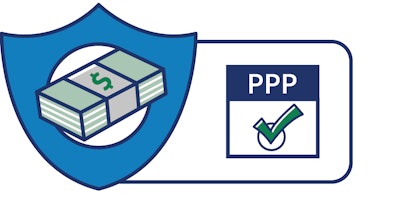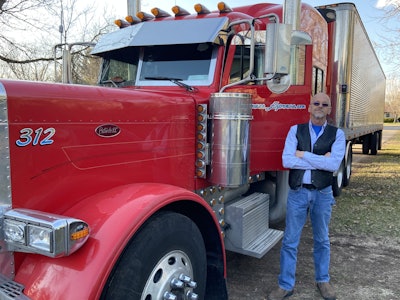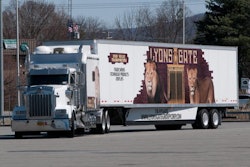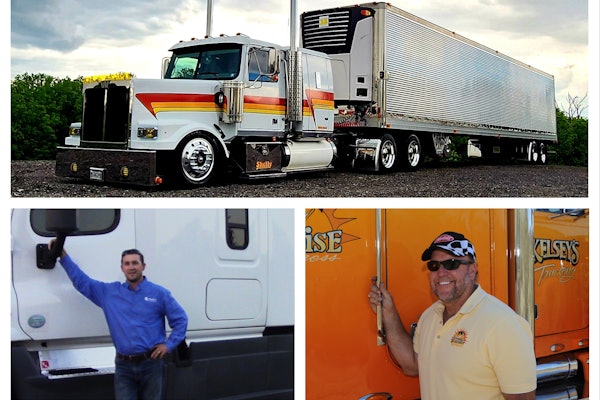The new pandemic relief package signed Sunday by President Trump, in addition to benefits affecting millions of Americans, contains other good news for truckers, especially those who’ve participated in the Paycheck Protection Program or those eligible for a new round of PPP.
The benefit most specific to long-haul drivers is a boost in the per diem deduction to 100% from the current 80%. The change would apply to the 2021 and 2022 tax years for restaurant meals purchased while working away from home.
 A new round of the Paycheck Protection Program makes $284 billion available to small businesses that have suffered from the pandemic.
A new round of the Paycheck Protection Program makes $284 billion available to small businesses that have suffered from the pandemic.While the bill’s language “doesn’t refer to ‘per diem’ deductions, which is a specific section of the IRS code relating to truck drivers,” further clarification from the U.S. Small Business Administration, which administers PPP, is needed to ensure it applies to truck drivers, said Todd Amen, president of owner-operator financial services provider ATBS. For typical over-the-road drivers, the change could lower a trucker’s tax bill by $800 to $1,000, said Michael Schneider and David Campos of ATBS.
However, much bigger financial aid has been available under the PPP small-business loan program, which is now being extended through March 31 in a new round. What’s being called PPP2 adds $284 billion to the pot. It also changes the first PPP’s $10 million maximum loan amount to $2 million, a limit designed to better target small businesses instead of big corporations that tapped into PPP1 lending.

Borrowers who meet certain criteria can apply to have PPP loans forgiven. Among ATBS clients, most borrowed $8,000 to $12,000 in PPP1.
Also, “the bill ensures the tax deductibility for business expenses paid with forgiven PPP loans,” said ATBS in its newsletter. “The IRS previously had stated these expenses would not be deductible.” That was because the Internal Revenue Service considered it double-dipping to deduct expenses paid for with what was effectively a government grant.
Leased operators and those with operating authority interested in PPP2 loans will have to meet all of these qualifications:
- The business has fewer than 300 employees.
- If the business received a PPP1 loan, it must have used or be planning to use the full amount of that loan.
- The business can demonstrate a drop of at least 25% in gross revenue for any quarter during 2020 compared to the same quarter of 2019.
 Like many independents, Wisconsin-based cheese hauler Rick Sterling, who drives this 2005 Peterbilt 379, experienced about eight weeks of slow freight in the spring as the pandemic prompted widespread lockdowns. He paid his only driver extra and gave him preference for Sterling’s Bluegrass Express hauls to help ensure he didn’t lose him. After missing out on the first round of funding under the Paycheck Protection Program, Sterling considered seeking a loan in the second round, then decided he had enough cash on hand and assumed that food hauling would be stable for the rest of the year. The second half of 2020 has been “decent,” he said, and he doubts he’ll apply for 2021 PPP funding.
Like many independents, Wisconsin-based cheese hauler Rick Sterling, who drives this 2005 Peterbilt 379, experienced about eight weeks of slow freight in the spring as the pandemic prompted widespread lockdowns. He paid his only driver extra and gave him preference for Sterling’s Bluegrass Express hauls to help ensure he didn’t lose him. After missing out on the first round of funding under the Paycheck Protection Program, Sterling considered seeking a loan in the second round, then decided he had enough cash on hand and assumed that food hauling would be stable for the rest of the year. The second half of 2020 has been “decent,” he said, and he doubts he’ll apply for 2021 PPP funding.Based on the average revenue decline of 4% for ATBS clients through the third quarter of 2020, most owner-operators won’t meet that revenue criteria. “However, there are certainly industry segments as well as specific clients who have been harder hit that will qualify for new PPP loans,” the ATBS newsletter said. Some cases will be operators who contracted COVID-19 and missed an extended period of work, Schneider said.
To get a PPP2 loan forgiven, borrowers will have to spend at least 60% of the funds on payroll over a period of eight to 24 weeks that the borrower designates.
The new bill also addresses another hurdle created with PPP1 – a lengthy, complicated application for loan forgiveness. The bill provides a one-page application for recipients of PPP loans under $150,000. Forgiveness requires that the borrower certify the number of employees retained by using the loan and the amount spent on payroll expenses.
Schneider said ATBS expects further SBA guidance on this, so it’s holding off before processing applications for its clients.
Truckers will also enjoy the same benefits available to other citizens, notably a cash stimulus payment and, for those unemployed, extended benefits.
The bill approves a $600 per person payment, though Congress continues to wrestle with President Trump’s push to increase that amount to $2,000 per adult. As it stands, $600 will be available to individuals earning up to $75,000 per year, and $1,200 for couples earnings $150,000 per year, based on 2019 adjusted gross income. Eligible families also will receive $600 for each dependent child.
The IRS and the Treasury Department announced this week that stimulus payments started going out Dec. 29 to taxpayers set up for direct deposit. Paper checks were scheduled to begin being mailed on Dec. 30.
The bill extends the $300 per week federal unemployment supplement to state unemployment benefits from Dec. 26 through March 14.











